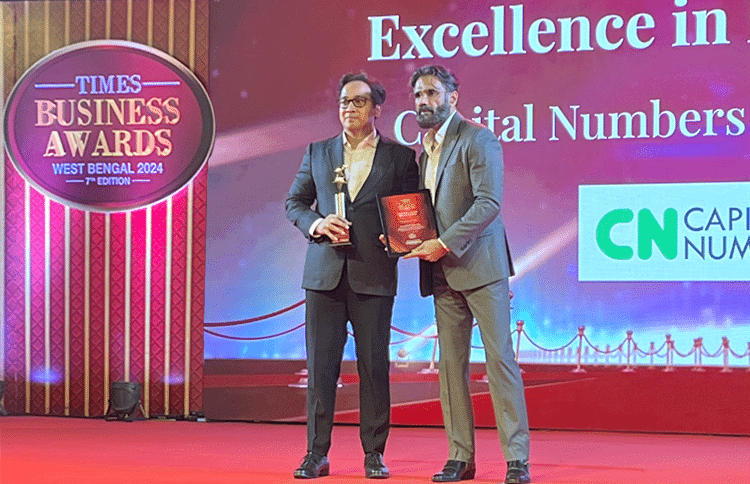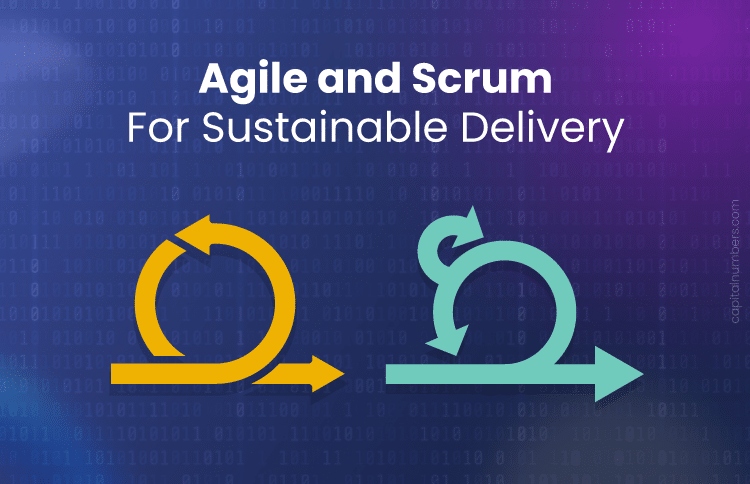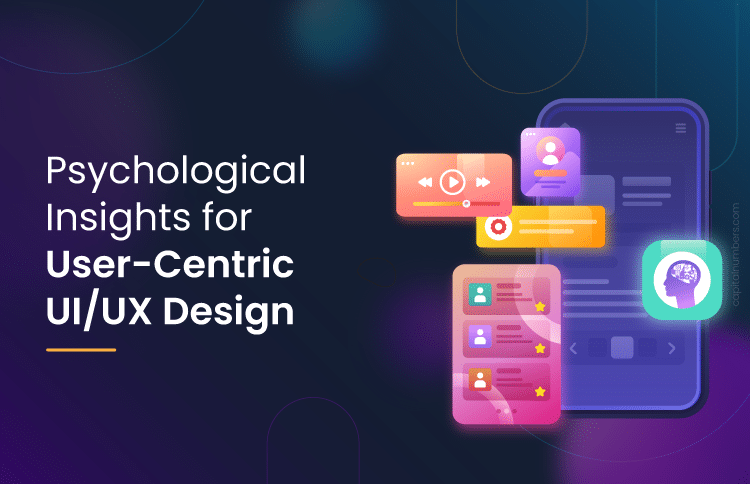2024 CTO Challenge Checklist: Are You Prepared for the Evolving Tech Landscape?
Table of Contents
In 2024’s fast-changing tech world, the role of Chief Technology Officers (CTOs) is more vital than ever. As technology continues to advance at a fast rate, shaping every facet of business operations, CTOs stand at the forefront. They navigate through the complexities of digital transformation. Their role has transformed from managing IT infrastructures to becoming key strategic leaders who drive innovation, efficiency, and competitive advantage.
However, with great power comes great challenges. CTOs are now facing a series of challenges that could redefine the future of work for IT professionals. From integrating cutting-edge technologies to securing top talent in a competitive market, the road ahead is full of potential hurdles. But what are these challenges for CTOs, and how can they prepare to tackle them effectively? Read the blog to know the key challenges CTOs will likely face in 2024 and how to combat them effectively.
Key Challenges for CTOs in 2024
1Technical debt
Technical debt occurs when quick, short-term fixes in software development lead to outdated and inefficient systems. This creates challenges for CTOs, as it slows down innovation, increases maintenance costs, and complicates the integration of new technologies, including legacy app modernization efforts. Balancing the need to address these legacy issues while pursuing new developments and ensuring operational stability becomes complex. It directly impacts a company’s ability to grow and stay competitive.
Solutions for CTOs
- Conduct a Comprehensive Audit: Identify and assess the extent of technical debt within the system.
- Prioritize Based on Impact: Focus on areas where reducing technical debt will significantly impact operations and innovation.
- Implement Refactoring: Update and improve the code systematically, without altering its functionality, to enhance maintainability.
- Leverage Automation: Use automated testing and continuous integration tools to ensure that new developments do not add to the debt.
- Adopt an Incremental Approach: Tackle technical debt in manageable sections rather than attempting a complete overhaul at once.
- Foster a Culture of Quality: Encourage practices that prevent the accumulation of new technical debt, such as code reviews and pair programming.
- Invest in Training: Equip your team with the skills to use modern technologies and methodologies that reduce the likelihood of accruing technical debt.
2Talent Acquisition and Retention
Talent acquisition and retention will be among the top IT leadership challenges 2024 due to the ever-increasing demand for skilled technology professionals in a highly competitive job market. As technology advances rapidly, finding individuals with skills in AI, machine learning, cloud computing, and cybersecurity becomes more difficult. Also, the shift towards remote and hybrid work environments has broadened the talent competition globally, making IT talent management difficult. Continuous innovation and the pace of digital transformation require a technically proficient, adaptable workforce committed to lifelong learning. This puts pressure on CTOs to find the right talent and create an environment that encourages their growth and ensures their long-term commitment to the organization.
Solutions for CTOs
- Better Employer Branding: Promote your company’s culture, values, and technological innovation to attract like-minded professionals.
- Offer Competitive Compensation: Ensure salary packages are competitive and include benefits that tech professionals value, such as flexibility and remote working options.
- Invest in Professional Development: Provide continuous learning, certifications, and growth opportunities to keep the team up-to-date.
- Foster a Positive Work Culture: Create an inclusive environment encouraging collaboration, innovation, and open communication.
- Engage in Active Talent Communities: Participate in tech forums, conferences, and meetups to connect with potential candidates and promote your company.
- Develop a Strong Onboarding Process: Ensure new hires feel welcomed and integrated into the team from day one, with clear paths for their role and contributions.
- Prioritize Employee Well-being: Focus on mental health and well-being initiatives to support your team and reduce burnout.
- For Offshore Team Management: Establish robust communication channels and foster cultural understanding to manage the offshore development team effectively. Provide cross-cultural training and team-building activities to maximize partnership effectiveness.
3Cybersecurity and Data Privacy
Cybersecurity and data privacy will continue to be top challenges for CTOs in 2024 due to the rising number of cybersecurity threats for businesses. As businesses increasingly rely on digital platforms and store sensitive information online, they become more attractive targets for cybercriminals. Also, the expansion of remote work has broadened the attack surface, with employees accessing company networks from various, often less secure, locations. Regulatory requirements for data protection are also becoming stricter worldwide to combat cybersecurity in the digital age. This environment demands constant vigilance, updated security practices, and a proactive approach to safeguarding data privacy and security.
Solutions for CTOs
- Conduct Regular Security Assessments: Regularly evaluate your security posture to identify and address vulnerabilities promptly.
- Implement Strong Access Controls: Use multi-factor authentication and the principle of least privilege to minimize access to sensitive information.
- Invest in Employee Training: Educate your team on cybersecurity best practices and the importance of data privacy to prevent accidental breaches.
- Deploy Advanced Security Technologies: Use encryption, intrusion detection systems, and AI-based security solutions to enhance your defense mechanisms.
- Establish a Robust Incident Response Plan: Have a clear procedure for responding to security incidents to minimize damage and recover quickly.
- Regularly Update and Patch Systems: Keep software and systems updated with the latest security patches to close vulnerabilities.
- Secure Remote Access: Implement secure VPNs, use end-to-end encryption for data in transit, and ensure that remote work policies uphold security standards.
4Managing Budget Constraints
It will be one of the biggest challenges for CTOs in 2024 as organizations strive to innovate among economic uncertainties. The push for digital transformation, along with the need to adopt emerging technologies, needs a huge investment. However, CTOs often face the difficult task of balancing these technological advancements with the financial realities of their organizations. The pressure to deliver more with less, optimize costs, and demonstrate a clear ROI from technology investments makes budget management a critical, ongoing challenge. Also, the global economic landscape may impose further constraints on spending. This makes it essential for CTOs to allocate resources to areas with the highest impact on business growth and efficiency.
Solutions for CTOs
- Prioritize Investments: Focus on technologies and projects that align with core business goals and have the potential for the highest ROI.
- Adopt Agile Budgeting: Implement flexible budgeting practices that allow for adjustments as priorities shift and new opportunities arise.
- Optimize Existing Resources: Regularly review and assess IT assets and services for efficiency gains and potential cost savings.
- Choose Cloud Computing: Use cloud services to reduce upfront infrastructure costs and benefit from scalable, pay-as-you-go pricing models.
- Monitor and Report on Spending: Implement tools and processes for tracking IT spending in real-time to make informed decisions and adjustments.
- Collaborate Across Departments: Work with other departments to identify opportunities for shared technology investments and cost-sharing.
- Consider Outsourcing: Check software development outsourcing options for specific IT tasks or projects to leverage specialized expertise and reduce operational costs.
5Keeping Pace with Evolving Technology
Due to the rapid advancement and addition of new technologies, keeping pace with emerging technologies will be another top challenge for CTOs in 2024. Innovations in areas such as artificial intelligence and machine learning (AI/ML), blockchain, and the Internet of Things (IoT) are reshaping industries at a high rate. For CTOs, this means continuously assessing and integrating new technologies to maintain competitive advantage and meet customer expectations. However, the speed at which these technologies develop and change can overwhelm existing IT infrastructures. It requires CTOs to be pragmatic in their approach to technology management. Also, the need to upskill teams to handle new technologies and the risk of investing in solutions that may quickly become obsolete add to the complexity of staying technologically agile.
Solutions for CTOs
- Continuous Learning and Development: Encourage ongoing education and training for IT staff to keep skills up-to-date with the latest technologies.
- Agile IT Infrastructure: Invest in flexible and scalable IT infrastructure that adapts quickly to new technologies and business models.
- Customer-Centric Approach: Focus on technologies that enhance customer experience and engagement, ensuring investments align with user needs and preferences.
- Risk Management: Develop a framework for assessing the risks and benefits of new technologies, including potential impacts on security and privacy.
- Technology Scouting: Regularly assess the technology landscape for opportunities and threats, using insights to inform strategic planning.
6Overcommitment
Overcommitment is a challenge that CTOs are likely to face in 2024. It is because the drive to innovate and stay ahead in the market can result in taking on more projects than their teams and resources can realistically handle. This can lead to missed deadlines, lower-quality work, and increased stress and frustration among team members. Addressing this challenge requires careful planning, clear prioritization, and effective communication.
Solutions for CTOs
- Prioritize Projects: Assess and rank projects based on their strategic value to the organization and potential impact. Focus on those that align closely with the company’s goals.
- Invest in Automation: Automate repetitive and time-consuming tasks to free up team members for more strategic work.
- Set Realistic Deadlines: Evaluate your team’s capacity and consider potential obstacles when setting timelines to ensure they are achievable.
- Improve Resource Management:Use resource management tools to understand your team’s workload and availability clearly. This helps in making informed decisions about taking on new projects.
- Communicate Clearly: Keep open communication lines with stakeholders about achievable goals within set timeframes and resources. Manage expectations from the start.
- Encourage Saying No: Create a culture where team members feel comfortable raising concerns about overcommitment and can say no to additional tasks that cannot be accommodated.
- Regularly Review Workloads: Conduct frequent reviews of current projects and workloads to identify potential overcommitment issues early on.
7Effective Communication
Communication gaps stand out as a challenge for CTOs. The expanding role of technology across various departments demands flawless communication between tech teams and the rest of the organization. Miscommunication can lead to misalignments in project goals, delays in project delivery, and inefficiencies in resource allocation. Also, as remote and hybrid work models continue, ensuring effective communication across distributed teams increases complexity. Overcoming these communication barriers is essential for achieving strategic objectives and creating a collaborative work environment.
Solutions for CTOs
- Implement Regular Check-ins: Schedule frequent meetings with key stakeholders and team leads to ensure alignment on goals and expectations.
- Use Collaboration Tools: Leverage technology like project management software and communication platforms to keep everyone updated and connected.
- Establish Clear Communication Channels: Define specific channels for different types of communication (e.g., urgent vs. non-urgent) to streamline information flow.
- Promote an Open-door Policy: Encourage team members to voice concerns and ask questions to prevent misunderstandings and build trust.
- Train on Communication Skills: Offer training to improve communication skills across the team, focusing on clarity, conciseness, and active listening.
- Encourage Cross-functional Teams: Form teams with members from different departments to enhance understanding and cooperation across the organization.
- Recognize and Reward Effective Communication: Highlight and reward instances of successful communication to set a positive example.
8Compliance
Compliance challenges CTOs as they deal with an increasingly complex regulatory landscape that varies by industry, region, and type of data handled. With regulations like GDPR, HIPAA, and others evolving and new ones emerging, staying ahead of IT compliance requirements demands constant vigilance. The challenge gets more challenging because CTOs have to fit these compliance rules into their current systems without slowing things down. Also, because technology advances so quickly, regulations often lag. This means CTOs must stay ahead, ensuring their companies can quickly adjust to new rules. This requires CTOs to actively determine how rules affect their tech systems and how they handle data.
Solutions for CTOs
- Regular Compliance Audits: Conduct periodic audits to ensure ongoing adherence to relevant regulations and identify areas for improvement.
- Compliance Training Programs: Implement comprehensive training for all employees on compliance requirements relevant to their roles, emphasizing the importance of data protection and regulatory adherence.
- Data Protection Measures: Invest in robust data security technologies and practices, such as encryption and access controls, to safeguard sensitive information.
- Compliance-focused Technology Solutions: Utilize compliance management software that can help automate the tracking and reporting of compliance data.
- Engagement with Regulators: Maintain open lines of communication with regulatory bodies to stay informed about upcoming changes and seek clarifications on compliance matters.
- Documentation and Record-keeping: Keep detailed records of compliance efforts, including audits, training, and incident response, to demonstrate due diligence.
- Regular Policy Updates: Keep all compliance policies and procedures updated with the latest regulations and best practices and communicate changes effectively throughout the organization.
9Promoting Sustainability and Environmental Responsibility
Promoting sustainability and environmental responsibility poses a challenge for CTOs. You should include eco-friendly practices in your IT operations and infrastructure. This effort comes with balancing environmental initiatives against operational efficiency and cost management. Moreover, measuring the environmental impact of tech decisions and aligning with organizational sustainability goals adds complexity. With technology evolving rapidly, CTOs should keep their sustainability strategies up-to-date, incorporating the newest green technologies and practices.
Solutions for CTOs
- Adopt Energy-Efficient Technologies: Prioritize using energy-efficient hardware and software to reduce power consumption.
- Implement Green Data Center Practices: Use renewable energy sources, improve cooling efficiency, and consider server virtualization to minimize the environmental footprint of data centers.
- Recycle and Dispose of E-Waste Properly: Establish e-waste recycling programs and ensure responsible disposal of outdated technology.
- Develop a Sustainability Policy: Create and enforce a company-wide policy focused on sustainability practices within the IT department.
- Invest in Renewable Energy: Explore opportunities to invest in renewable energy projects or purchase renewable energy credits to offset carbon emissions.
- Monitor and Report on Sustainability Efforts: Regularly measure and communicate the impact of sustainability initiatives, setting clear targets for improvement.
- Leverage Cloud Computing: Utilize cloud services to reduce the need for in-house data centers, taking advantage of the scalability and efficiency of cloud infrastructure.
10Embracing the “Experience Economy”
Embracing the “experience economy” is challenging for CTOs because it requires a shift from focusing on products and services to creating memorable and engaging customer experiences. In the digital age, consumers expect seamless, personalized interactions across all touchpoints, which demands integrating advanced technologies into the customer journey. This shift necessitates technological innovation and a deep understanding of customer needs and behaviors. Also, CTOs must ensure that these technologies are implemented to enhance the user experience without compromising privacy or security. Keeping up with the rapid change in consumer expectations and technology trends adds another layer of complexity to this challenge.
Solutions for CTOs
- Customer-Centric Approach: Prioritize understanding and meeting customer needs in every technology decision.
- Invest in Data Analytics: Use data analytics to gain insights into customer preferences and behaviors, enabling personalized experiences.
- Focus on User Interface and Design: Ensure all digital interfaces are intuitive, accessible, and visually appealing.
- Continuous Feedback Loop: Establish mechanisms to gather and act on customer feedback regularly, allowing for continuous customer experience improvement.
- Monitor Industry Trends: Stay informed about the latest trends in consumer behavior and technology to anticipate changes and adapt strategies accordingly.
Read More: Reducing Development Costs without Compromising Quality: Tips for Tech Companies
Bottom Line
In 2024, the job of CTOs is getting more complex as they deal with issues like outdated technology, hiring the right people, protecting against cyber threats, and managing budgets. These challenges are all linked, so CTOs must create well-rounded strategies to tackle them. Being successful in this changing tech world requires more than technical skills; it needs careful planning, the ability to change quickly, and attention to how choices impact the whole company. Also, focusing on eco-friendly practices and improving customer experiences shows how varied a CTO’s job can be.
To excel, CTOs need to lead in innovation and make sure technology efforts help the business and the environment. This means creating a culture where learning never stops, using flexible work methods, and always putting the customer first in tech developments. With these approaches, CTOs can help their organizations navigate the digital world and succeed in the face of fast tech changes and high expectations. The road ahead is tough, but with smart strategies, CTOs can turn challenges into chances for growth and change.















